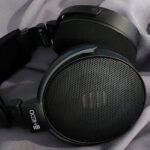Blog
HEDD Audio HEDDphone D1 Review — Headfonics

Louis reviews the HEDD Audio HEDDphone D1, the world’s first dynamic driver open-back headphone with a Thin-Ply Carbon Diaphragm (TPCD). It is currently priced at €699.
Disclaimer: This sample was sent to me in return for my honest opinion. Headfonics is an independent website with no affiliate links. Many thanks to HEDD Audio for their support
You can read here about previous HEDD Audio products previously reviewed on Headfonics.
This article follows our latest scoring guidelines, which you can read in more detail here.
HEDD Audio has been making some extraordinary headphones since 2015. The reason for that statement is that they offer a line of AMT driver-equipped headphones, which are rather unique in this market. They have offered three models to date: the HEDDphone, the HEDDphone TWO, and the TWO GT.
About the only other company that offers an AMT full-range driver headphone that comes to mind is Monoprice. But they offer only one model, not a full line of AMT driver headphones like HEDD Audio does.
HEDD Audio is now taking a more traditional approach to the dynamic driver headphone market with their new open-back HEDDphone D1, priced at €699.
The HEDDphone D1 is the company’s first dynamic driver model, and also a first for the type of driver diaphragm and the materials they used.


Features
It was eight years ago that HEDD Audio conceptualized today’s review subject, which is the HEDDphone D1, their first dynamic driver headphone and fourth headphone offering.
Quietly and behind closed doors, HEDD Audio developed this headphone in collaboration with Composite Sound from Sweden, which specializes in advanced diaphragm design and manufacturing.
They came up with a unique dynamic driver and a world first. This driver is the first to incorporate a thin-ply Carbon Diaphragm, or TPCD technology, as labeled by HEDD Audio.
One funny aspect, and just my personal opinion, is that although the HEDDphone D1 is technically an open-back design headphone, it acts like a closed-back as it produces a minimum amount of noise leakage.
Meaning, you get the best of both worlds, because they don’t produce a restricted soundstage.


Design
One of the cool aspects of the HEDDphone D1 is that HEDD Audio says it is fully serviceable and all the components of the build are replaceable. I can’t stress how much of an advocate of that concept I am.
The overall build is made from high-quality polymers that tie together with dual spring steel sliders on top.
The sliders’ pieces themselves are also made from the same Polymer, and so are the yokes. But they’re thick and look strong enough to last. Most of the headband components are fastened by screws.
The cups are also made from this Polymer material and are capable of around 30 degrees of swivel on each side, but don’t swivel enough to lay the cups flat, DJ style.
The swivel amount is ample enough to accommodate any head size or shape, at least.
The back of the cup is an open-back design using a metal perforated grill to protect the driver. HEDD Audio kept the AMT appearance by incorporating a four-slot grill behind the driver, which I found keeps the HEDD design aesthetically pleasing and keeps them in line with the rest of the HEDD Audio headphone line.
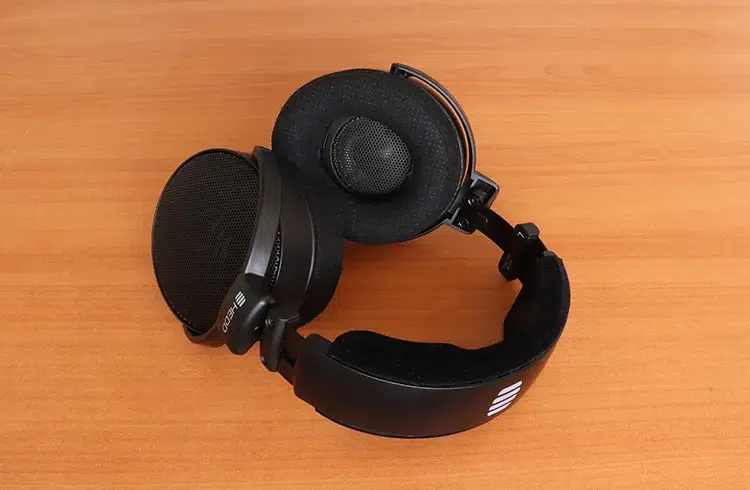

Stock Pads
The HEDD Audio HEDDphone D1 comes with some comfy pads that are made with a fast-acting, pliable soft foam that conforms to the ear quickly.
All the headphones in the HEDD lineup use rectangular-shaped pads, but the HEDDphone D1 comes with round pads that measure around 100mm with an inner hole of around 60mm.
The cloth HEDD Audio used is a strong Velour cloth, stitched together, which is a plus as far as durability is concerned.
The pads are slip-mounted over the cups, which makes them easy to swap out. Unfortunately, you only get one set while some of the HEDD Audio models come with two sets.
Comfort
Plush comes to mind when I think about the comfort levels you get when you wear the HEDDphone D1. Everything is cloth-covered, including the top cushion, which is also center-notched for added comfort. You’ll never feel a top-center pressure point wearing these.
There’s plenty of slide amount on the adjusters to accommodate any head size, and the clamping force they produce is not too bad either. They tend to hug your head.
My ears barely fit inside these pads, but they do, and I have average-sized ears. The material does get a bit warm after wearing these cans for long periods, but just a momentary lift and reposition seems to alleviate that. Those cups don’t have much venting anywhere.
They weigh 350 grams, which is not bad, considering most headphones today tip the scale at over 400 grams.
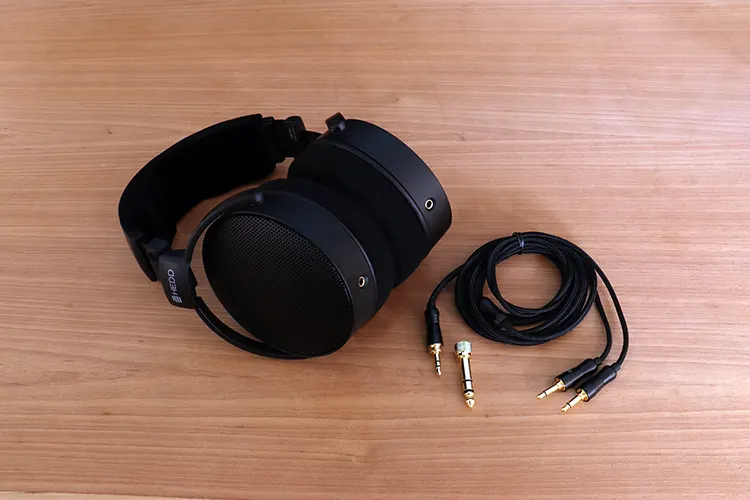

Stock Cable
What’s not to like about the stock cable? It’s all cloth covered with heavy-duty hardware. The only con here is that you don’t get balanced connectivity, but the HEDDphone D1 is efficient and doesn’t need gobs of power.
The connectivity is achieved via a 3.5mm TRS with a 6.35mm adapter. The 3.5mm pair that connects to the cups is also a 3.5mm TRS type. The cups’ connections are surface-mounted and will accept any cable with 3.5mm connectivity.
The HEDDphone D1 uses the common tip positive wiring scheme, and that makes it easy for the end user to obtain and use a plethora of aftermarket cables, including some stock cables from companies like MEZE Audio, HIFIMAN, or Focal.
I don’t know what material they used as far as the metallurgy inside the cable itself, but it hits a midpoint tone-wise. I’ll explain what I mean later.
Packaging & Accessories
The box is dark, all black, with a flip top that reveals the carrying case inside. The headphones are neatly cradled inside the carrying case.
The only other items you get are the stock cable with the 3.5mm adapter and a velvet carrying pouch.
Black items in a black carrying case, inside a black box. The white logos on the side and front of the box are the only color breaks. Oh, the darkness.


Sound Impressions
First off, give these some time to break in. I found them to be lifeless at the beginning, with a very small soundstage, with a bass response that was not as tight as it became after 15 or 20 hours of use. I would give them more time because they keep improving on me.
I used, as always, what I had on my desktop. An SMSL SU-X and SH-X combo, a Rose Technics RT-5000, the iFi audio NEO iDSD 2, and Topping’s DX5 II.
Just for kicks and to see how efficient the HEDDphone D1 could be, I also used the MEZE Audio dongle that came with the 99 Classics Gen 2 to test their efficiency. Plus, I threw in the FiiO M11 Pro for a portable device perspective.
Summary
The HEDDphone D1 gave me a lot of detail and a high level of resolve, which is what I feel their forte is, alongside a natural timbre that gives each element in recordings equal or proper representation.
To my ears, the HEDD Audio HEDDphone D1 is monitor-like in its presentation. It attempts to deliver a detailed presentation of background instruments within tracks. Elements that are usually absent on other sets or faint are brought to light in this set.
They do sound full range, but dark leaning. They produce full bass that is capable of rumble and impact, but they dip below 28Hz and become ineffective below 22Hz. Above that 28Hz spot, the bass seems almost linear in frequency response.
The midrange area displays a natural timbre with a small amount of vocal restraint. That is a purposeful tune so that the vocals never become strident, heated, or searing. There is little in the way of irksome peaks from these headphones, sounding properly tuned.
The high frequencies are produced in a meaty manner, in that every note has solidity and weightiness. Combined with the above natural midrange and the resolve capability, rounds out the overall highlights, which are all common characteristics of HEDD Audio’s sonic stamp.
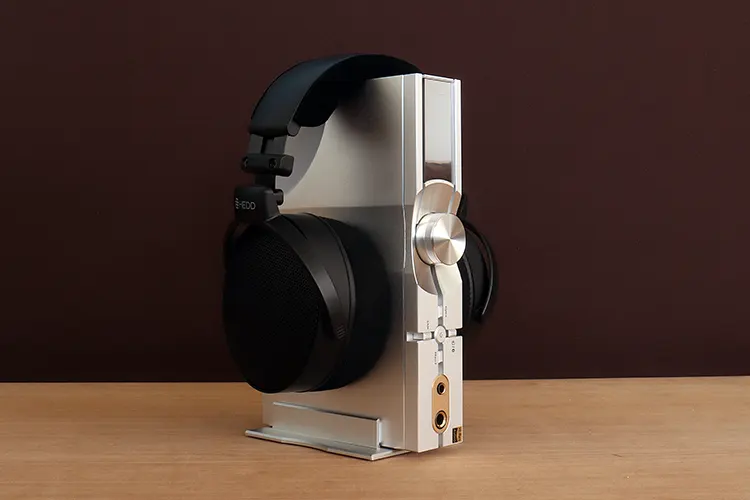

Bass
The HEDDphone D1 has a rather flat response in the sub-bass. I ran a tone sweep and could not detect any bumps or dips except for the mentioned dip below the 30Hz point.
The bass is linear in frequency response above 30Hz, and well-defined notes are a product of the well-behaved drivers.
There’s no midbass emphasis; instead, you get a full bass response that produces notes that are full-bodied and not honky sounding. The bass note weight gives notes solidity, and they never sound dull or resonant.
The HEDDphone D1 bass response won’t impress bassheads since bass response below 30Hz is subdued. The overall bass response caters to quality bass that highlights note distinction and texture over a boosted, consumer-oriented tuning.
Midrange
I found the midrange to be fairly linear as well, except for that small peak I found. The HEDD Audio D1 produces a highly dynamic but soft-mannered midrange that delivers plenty of presence while remaining polished and confident.
I found the largest peak in the midrange, specifically around 2kHz, but listening to the HEDDphone D1 doesn’t seem to emphasize that area, and it just adds to the upfront detail you get from the D1 in the midrange.
What I most admire is the driver’s composure; it remains under control when the music gets complex. I also got a real insight into some of my more familiar recordings.
For example, for the first time, I heard three notes instead of two notes on the ‘wo’ sung at the very end of “Beauty and a Beat” by Postmodern Jukebox. Nuances like that are what make the HEDDphone D1 so engaging to listen to.
The midrange is full of discovery. Play songs that you’re familiar with, and you get subtleties in spades. The midrange also sounds natural, vibrant, and lively on top of all the rest.
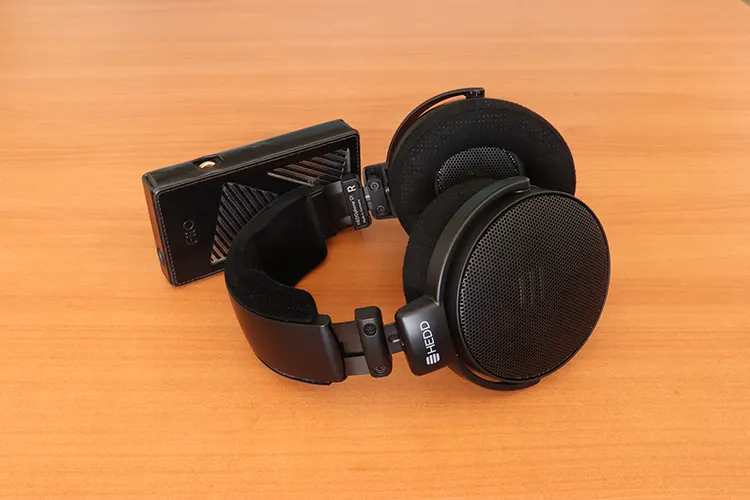

Treble
The treble response of the HEDD Audio D1 has a high amount of detail and is as close to a realistic presentation as possible in this class. There’s not much coloration here.
The HEDDphone D1 produces a heavy treble response in note weight, not heavy to listen to. They’re what one could call a relaxed and controlled top end, although high-frequency presence is on the high side.
Not that I would call the HEDD Audio D1 bright because the high frequencies match the presence of the midrange, maintaining balance, and giving the overall tonality verisimilar accuracy.
Staging & Dynamics
The soundstage here gives a bit of an impression as if it’s large, but when you listen carefully, all the elements within the recordings tend to mingle in the center area of the stage.
But, then again, these HEDDphone D1 make great Jazz cans, and that’s the kind of soundstage you want. One that makes you feel as if the listening session is in a closed environment.
The overall size sounds as though everything is being produced within a rectangular area in front of the listener. There is some height production, but it’s not too much over one’s head level.
Micro-placement seems like a strong point for the HEDDphone D1. It manages to place every element accurately without smear or clutter.
I did notice that with certain sources, the soundstage height would increase. The funny aspect about that is that the sources were low-tier compared to some high-tier components that produced the narrow soundstage but gained more focus in return.
Click on page 2 below for my recommended pairings and selected comparisons.

